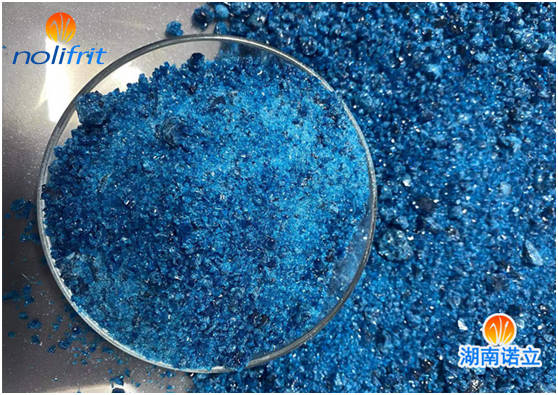Enamel Cover Coat Reacts During Firing
The firing of the enamel cover coat is to fuse the cover coat and the ground coat interface, and obtain the desired color, the surface is bright and delicate, and the porcelain layer has physical and chemical properties such as acid resistance, alkali resistance, water resistance, and atmosphere resistance. When the firing reaches a certain temperature, the ground coat and the cover coat are softened together, and the interdiffusion intermediate layer is formed on the interface, so that they form a good combination, and the quality of the combination mainly depends on the softening temperature, viscosity and expansion coefficient of the two. The degree of mutual matching of performance.

The firing of enamel cover coat is mainly divided into 5 stages. Briefly introduce the main reactions of the cover coat during the firing process:
1. The first stage room temperature~150℃
Exclude the adsorbed water in the cover coat powder layer, and some organic substances are decomposed (the urea decomposed mill adduct begins to decompose at 135 ℃).
2. The second stage is 150~400℃
Structural water in clays and inorganic salts is removed and a solid-phase reaction occurs.
3. The third stage 400~600℃
The low-melting compound begins to melt, sinters in layers, and the ground coat and surface finish begin to diffuse and penetrate each other.
4. The fourth stage is 600℃~sintering temperature
The powder layer has basically melted, the mutual penetration of the ground coat and the cover coat has intensified, the middle layer is gradually formed, and the inner layer of air bubbles is further eliminated.
5. The fifth stage will continue for a period of time after reaching the firing temperature
The reaction is basically over, the intermediate layer between the ground coat and the cover coat has been completely formed, and the opacity coloring has been completed.
It is worth mentioning that the firing temperature of the enamel cover coat is usually about 20°C lower than that of the enamel ground coat. If the ground coat is more fusible than the cover coat, it may cause dark spots and black lines on the surface of the cover coat. If the ground coat is too refractory, the composite intermediate layer between the cover coat and the ground coat is difficult to form and the combination is poor. Therefore, when enamel manufacturers choose enamel cover coat, they must pay attention to the proper matching of the firing temperature of the ground coat and the cover coat.